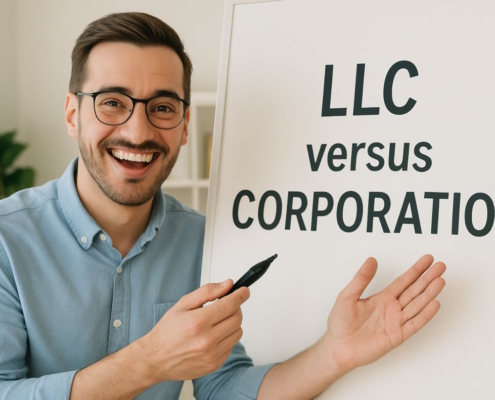Introduction
Despite being a tough and complex subject to allege & prove, libel constitutes one of the many legal grounds of action that the general public frequently considers proper. The majority of people believe it to be simply saying something false about somebody when it is used in everyday speech. A person must meet important legal criteria in order to win when bringing a lawsuit for harm based on these reasons of action.
A communication that is false and hurts another person is called defamation (the legal sense is “publishing”). There are two forms of defamation: written (libel) and verbal (slander). The standards for proving and demonstrating damages for each are very different. In both cases, the elements of libel or slander must be established to the court’s satisfaction before damages can be awarded.
The fundamental conditions for proving each will be discussed in this article, along with the unique issues that come up when someone makes these claims. The typical successful strategies for thwarting defamation-based actions are also covered.
1. Definitions of Slander and Libel
A. Broad meaning of Defamation
Defamation may be defined as an infringement on someone else’s reputation. It might be slander or libel. It involves a) a publication that’s (b) untrue, (c) defamatory, (d) unprivileged, and (e) has an inherent capacity to cause harm or exceptional damage.
The dissemination must have been the defendant’s aim because both slander and libel are deliberate torts. Malice, or animosity that is genuine, is not a component of slander. To seek penalties or to overcome specific privileges, proof of intent is necessary. These points are part of the elements of libel that courts examine to determine liability.
B. Slander and Libel Differentiated
The more persistent types of defamatory content are included in libel; in California, this includes “writing, publishing, image, effigy, or similar fixed depiction to the sight.” (Civ. Code, Section 45.) The more transient type is slander, which is typically limited to spoken words and body language. (See Section 46 of the Civ. Code). Libel is exemplified by electronic communications and online postings.
While slander has its own rules, the elements of libel are often stricter.
C. Libel’s Statutory Definition
Libel is any unprivileged and false publication—whether through writing, printing, pictures, effigies, or other set representations to the eye—that exposes someone to hatred, ridicule, contempt, or obloquy, or that makes them be avoided or shunned, or that has the potential to cause them harm in their line of work. This statutory definition aligns closely with the recognized elements of libel applied in most jurisdictions of the United States of America.
2. The Common Law Rule: Without proving special damages, every libel is actionable
Slander and libel have different consequences under the broad common law norm. As previously said, libel is seen as more serious and damaging, and it has a more lasting form. It is deemed unlawful per se if the issue is defamatory and in writing or another permanent form that amounts to libel; that is, harm is assumed to result from the conduct, and the plaintiff does not need to allege or demonstrate special damages. In the event of a lack of a strong defense, the plaintiff will always be entitled to a verdict for at least modest damages in order to clear their name and uncover the false accusations.
This presumption of harm is one of the unique elements of libel that distinguishes it from many other tort claims.
The Libel Doctrine in California
The phrase “libel per se” was given a unique meaning in California. Without evidence of particular harm, a statement is considered libelous per se if it is slanderous on its face. However, it isn’t libelous per se and cannot be taken further without a pleading and evidence of exceptional damages if it is defamatory per quod, that is, if the libelous nature is not immediately evident and necessitates a clarification of the context (the “innuendo”) in order to render its meaning apparent. In California, the idea of libel per se has been around for a while. Plaintiffs who fail to establish even one of the elements of libel risk losing their case.”
It is a codified doctrine. On the surface, a libel is defined as one that defames the complainant without the need for an explanation, including an inducement, insinuation, or other external fact. Unless the plaintiff claims and demonstrates that he has experienced particular harm as a direct consequence of the defamatory statement, it is not enforceable even if it is not defamatory on its face.
There is no libel at all if no sane reader would interpret a false & unprivileged publication as having a meaning that would harm the subject’s image in any of the listed ways. There’s a libel in and of itself if that reader would interpret it as defamatory without outside assistance beyond their own common sense and intelligence.
However, the libel will not be libel per se; rather, it will be libel per quod, which necessitates pleading & proof of particular damages, if the reader is able to identify a defamatory meaning because of knowledge of certain circumstances and facts that are external to the publication and aren’t things that are generally known and rationally related to all logical persons. Before filing a lawsuit, it is essential to understand the elements of libel that courts will evaluate.
1. Criminal conduct charges
“The accusation of the commission of a particular type of crime is plainly libel per se,” notes Professor Witkin.
A newspaper story that said that it was known that a particular firm was funding dishonest voters and that it was “stated that Edwards is to take control of the sack” was deemed defamatory in and of itself in the case of Edwards vs. San Jose Printing and Publishing (1893). It was not necessary for the plaintiff to demonstrate the meaning of the term “sack” in this context because it was already established.
The circular in Boyich vs. Howell (1963) accused the plaintiff, an elected councilman and election candidate, of stuffing the ballot box in a labor election, which resulted in a conviction, fine, and a five-year ban from assuming union office. The court determined that, on its own, this comment was defamatory.
2. Accusations of additional misconduct or character flaws
It may be the allegation that the complainant possesses a certain negativity of his character or is guilty of some act of deception. The publication does not necessarily have to point out that an individual committed a crime, but what is sufficient is that the publication is creating a negative perception of a person and defaming their reputation. Stevens vs. Snow (1923) and Maher vs. Devlin (1928) both implicate corporate wrongdoing in a single event or transaction.
Accordingly, it is criminal in and of itself to falsely accuse someone of “a betrayal of confidence placed in them or with treason to his colleagues” (Dethlefsen vs. Stull, 1948). In that instance, even though the complainant was not legally guilty of theft or embezzlement, a published letter from a former partner claiming that the plaintiff had received partnership monies that he had neglected to pay into the company’s account was deemed defamatory on its face.
In another case, it was claimed that the plaintiff, an advertising agent, had caused harm to her profession by continuing to use the company’s stationery after being fired without informing newspapers of the shift in status. This was done in order to deceive a number of people. It was therefore inherently defamatory. Courts focus heavily on whether the elements of libel have been clearly met in the evidence presented.
3. Derogatory remarks and epithets
According to California courts, a defendant does not have to directly accuse or charge someone with misbehavior in order to be held accountable; instead, they can be held accountable for using derogatory language or expressing thoughts that imply wrongdoing. See Albertini vs. Schaefer (1979) [calling a lawyer a “crook” is liable as slander per se, sans proof of specific damages] and Newby vs. Times-Mirror Corp. (1916) [remark that the individual is “hypocrite”].
The plaintiffs in Megarry v. Norton cautioned the defendant against parking his vehicle in the immediate vicinity of their business. On his vehicle, the defendant was showing a placard on which there were abusive words. The court supported the decisions of the plaintiffs and determined that defamatory statements were used in the undoubted disparaging manner, with the purpose of imposing the plaintiffs to ridicule and scorn.
Maidman was a leader of the Los Angeles Jewish community, an active attorney at the bar, and the head of the editorial board of the governing local B’nai B’rith periodical. He was the plaintiff in Maidman v. Jewish Publications. Defending a non-Jewish client in a trial, the plaintiff responded that Rosh Hashanah constituted a “joyous festival” on which the lawsuit may properly proceed, and the non-Jewish defense counsel’s petition for a continuance was turned down.
Within 2 weeks, defendants—publishers of a competing Jewish community newspaper—were aware of the occurrence. They released an editorial mocking the plaintiff’s claims over a year later. These facts & malice were stated by the plaintiff. The court decided that there was a cause to sue for libel per se in the complaint and ruled in favor of the complainant. The court made the following partial statement:
Libelous remarks and viewpoints do not have to be so extreme as to be vituperative in order to qualify as such. Allegedly a well-known figure in Jewish affairs, Maidman was charged as being undeserving of his high rank in B’nai B’rith, having less knowledge of his religion than a teenage child, and making all Jews appear silly. The defendant’s accusations were well-chosen to subject Maidman to the derision and mockery of both his fellow B’nai B’rith followers and his fellow coreligionists in general.
The court further determined that by suggesting that the plaintiff purposefully deceived the court to gain a benefit for the client and an obstacle for the other parties, the piece of writing also tended to harm him in his line of work as an attorney.
Plaintiffs performing public paving work were granted certain extensions in Williams v. Daily Review. The public works head informed the city council that the vendor had been informed that he was liable for liquidated damages and that the project was not proceeding in a satisfactory manner.
The head’s comments were reported by the defendant, an area newspaper, which also noted that the city’s issues are similar to a previous instance in which a low-bid job took months longer than expected to complete. The court ruled in favor of the plaintiff and found that this was defamatory in and of itself, implying that the plaintiffs had engaged in behavior that was incompatible with the proper performance of their duties as stipulated in their employment contracts.
The plaintiffs in Patton vs. Royal Industries (1968) were skilled workers who left the defendant’s employment to start their own company. Many plaintiffs’ prospective clients received a letter from the defendant informing them that they were “dismissed” and “replaced with people with more experience & knowledge.” The court ruled in favor of the plaintiffs, finding that the comment was defamatory in and of itself and a serious judgment on their talents.
3. Definition of Slander by Statute
Slander is defined as “an oral utterance of an unprivileged and false publication” that performs any or all of the following:
a) Accuses somebody of a crime.
b) Tends to negatively impact him in relation to his office, occupation, trade, or enterprise, either by denying him general qualifications in those areas that the office or another occupation specifically calls for, or by denying him something related to his office, occupation, trade, or company that has a tendency to reduce its profits.
c) Consequently, it results in real harm.
Only specific kinds of spoken statements are deemed to be harmful, unlike libel; actual harm must be pleaded and proven in order to be compensated for any other statements. The action may be continued if harm can be demonstrated, such as termination from work, the loss of job potential, loss of professional or business clients, etc.
A. Slander in general
According to the legal definition, the following categories of utterances are inherently slanderous.
B. Damage to one’s professional or business reputation
This is what Professor Witkin says:
The plaintiff must demonstrate unique damages in order to recover from a general accusation of dishonesty or immorality that does not amount to a felony charge and does not directly threaten to harm them in their business, office, profession, or occupation. However, an attack on a worker’s or businessperson’s integrity puts their job in jeopardy and is illegal in and of itself. The claim that a jewelry maker was a “crook” and “got off” with an item of jewelry that was given to him, therefore, reflected on his character as a bailee, directly hurt his livelihood, and was slander in the traditional sense.
The situation at hand is quite similar to Correia vs. Santos (1961). The plaintiff in that instance served as the nonprofit corporation’s president. The defendant referred to the plaintiff as “crazy in command,” a liar, and other derogatory terms. The court ruled that it constitutes slander in and of itself to accuse someone of lacking integrity while holding a private position of respect or trust. In other words, people who hold public office are not the only ones covered by Civ. Code 46.
Also, see Woolman vs. Oberkotter (1921), according to Civ. Code 46, it was defamatory in and of itself to say that the complainant, a principal at the school, was going to be fired because his superior saw him as “a weakened spot” in the educational system. This implied that the plaintiff was “generally disqualified” in those areas that his profession “particularly requires.”
Also, see the cases listed below. In Douglas vs. Janis (1974), the plaintiff, who produced a failed television program from which he earned $100,000, was accused of having “taken” and “stolen” the funds from investors; in White vs. Valenta (1965), the car dealer was dubbed a “son of a bitch”; in Albertini vs. Schaefer (1979), the attorney was called a “crook”; in Kelly vs. General Tel. Company. (1982), the plaintiff employee was accused of falsifying invoices; in Lipman vs. Brisbane Elementary School District (1961), the school superintendent was accused of receiving “kickbacks” and engaging in “shady dealings”; and in Mercado vs. Hoefler (1961), the plaintiff’s vocational capacity was questioned.
4. Regulations That Apply to Both Slander and Libel
- The Statement’s publication
A. What the publication means
The defamatory element should be published. It needs to be communicated to a third party who understands/knows its defaming nature and how it applies to the plaintiff. Maryland Casualty Co. vs. Ringler Associates (2000)
B. Speaking with One Person
It is sufficient to communicate with one individual; the publication does not have to be sent to the “public” or any sizable group. In Smith vs. Maldonado (1999) and Cunningham vs. Simpson (1969), a bank finance officer told an automobile vendor, “You have a hot title,” in front of a potential buyer.
C. Phrases That Could Have Several Interpretations
A party may argue that certain remarks are not actionable because they can be interpreted in multiple ways. It was once decided that if a defamatory allegation or innuendo is indicated and allows for an innocuous interpretation, then the phrase is not libelous in and of itself. See Peabody vs. Barham (1942), where the defendant’s newspaper comment that “Peabody’s divorced wife was additionally his aunt” was not inherently defamatory because it would suggest a legitimate marriage to an aunt by kinship (widow of a departed uncle) in place of an incestuous one.
The rule in question is no longer the law, though. In MacLeod vs. Tribune Publishing Company (1959), it was rejected. In that instance, the court ruled that even when a word may be interpreted innocently, it can nevertheless be defamatory in and of itself. A doctor who ran for a seat on the municipal council in McLeod claimed that the defendant published a front-page article in the election extra claiming that the communist newspaper “People’s World” had suggested his election; the article’s intended significance was that he was a fellow traveler or communist sympathizer, but this was untrue.
The defendant made a possible harmless claim that communists might have backed someone who disagreed with them in order to discredit him and help him lose, rather than someone who shared their opinions. The court made it clear that:
Since the law of defamation deals with the effects of communications between regular people, such a fine-grained examination of language has little use in it. It protects the astute writer who is knowledgeable about the rules of defamation and purposefully uses vague language to convey a blatantly defamatory imputation, rather than the naive defamer whose statements are libelous solely because of facts that are unfamiliar to him.
The requirements of section 45a define language that has a negative connotation on its face, rather than language capable of just one meaning; not only provide no support for it, but it also goes against them. It would be a disgrace to the law to rule that a defendant who wanted to damage a political rival’s reputation might accomplish his goal without being held accountable by using defamatory words that could have been interpreted in an innocent way.
- The use of pleading and evidence of defamatory meaning, or “innuendo.”
The plaintiff must argue and demonstrate that words or other materials were employed in a specific way that renders them defamatory (the “innuendo”) when they have an unclear significance or appear benign on the surface but are malicious due to extrinsic conditions (i.e., not malicious “per se”).
Bank of America vs. Washer (1943). According to the complaint in Washer, the plaintiff was fired from the defendant’s job, and the defendant’s officer ruled that the defendant was not able to rehire someone who “had acknowledged he had forged his own financial account” and had engaged in “flagrant insubordination.” The statements were meant to give the impression that the complainant was an inadequate employee and had committed embezzlement, and as a consequence, the plaintiff had no opportunity to find work at any bank.
The plaintiff presented a cause of action, the court ruled. Because the term “falsify” may indicate either a deliberate or inadvertent act, it was essential to plead by inference that the defamatory connotation was intended because the accusation could have a harmless interpretation. The court stated that there was no need for innuendo because the allegation about “flagrant insubordination” pertaining to his employment requirements was libelous on its face.
- The argument and evidence that the statement constituted a reasonable interpretation of defamation (i.e., “inducement”)
Extrinsic evidence demonstrating that the third party to whom the assertion was published fairly comprehended it in its negative sense must additionally be claimed in cases where the wording is confusing (the “inducement”). Dreyfus vs. Grand (1898) See additionally Palm Springs Tennis Club vs. Rangel (1999), in which the tennis facility did not assert a libel cause of action, failing to argue that readers of defendants’ documents had a unique understanding of facts that allowed them to conclude that the club was defamed by the purportedly libelous remarks made about its officer.
- The “Colloquium” or pleading and proof that the statement related to the plaintiff
If the complainant is not specifically mentioned in the statements, it must be demonstrated that they were said or written about them (the “colloquium”).
- Legal and factual questions
The question of whether the phrase is defamatory is a legal matter for the court to decide when its effect may be ascertained on its face. The court must decide whether, given the extrinsic facts presented, the phrase might have had the defamatory meaning that the plaintiff asserted if the matter may have had two interpretations, one innocuous and the other malicious. The jury will decide whether it was employed in that derogatory manner, if it did. Connell vs. Gallagher (2004)
5. The practical aspects of the legal proceedings
Being the target of slander or libel can have disastrous consequences. A person’s reputation, especially for honesty and moral behavior, may be their most valuable possession. To understand the enormous impact that integrity and opinion may have on an individual’s future, one need only consider the careers that have been destroyed by leaders ranging from New York’s governor to Alaska’s senator.
However, one’s profession and personal affairs can be more quietly ruined, as noted by renowned trial lawyer Louis Nizer in his closing argument. It was dubbed “the phone that doesn’t ring” by Nizer. How many times has someone been harmed when people who previously met as friends or even colleagues now refuse to see them?
It is wise to protect one’s own reputation, but going in excess is foolish. Since the “real” basis of the allegation is the primary defense in slander and libel cases, every suit based on these accusations ultimately ends by contesting the charges in a public setting. As the jury and the judge are presented with purported evidence of the identical charges that the general population has already seen published, the plaintiff may discover that they are the real “defendant.”
The plaintiff has to be prepared to demonstrate that the charges are untrue, and the media attention that could result from the trial process could exacerbate an already dire situation. California’s statutory definition aligns closely with the common law elements of libel.
Additionally, there are numerous privileges that can be used for defense. A privilege may be applicable, for instance, if the party publishing it and the party getting it had a “common interest,” such as managing an economic issue of shared concern. Moreover, there is much more responsibility on the part of the plaintiff when it comes to proving damages of libel by public personalities.
These defenses need to be thought of well before the lawsuit is filed, and the individual who is defending against the allegations of slander or libel should realize that proving a claim of this nature can prove to be a very difficult task as a litigant. The damages and facts surrounding each allegation of the incident should be evaluated by competent legal specialists before a decision on whether to seek redress in the courts is made.































